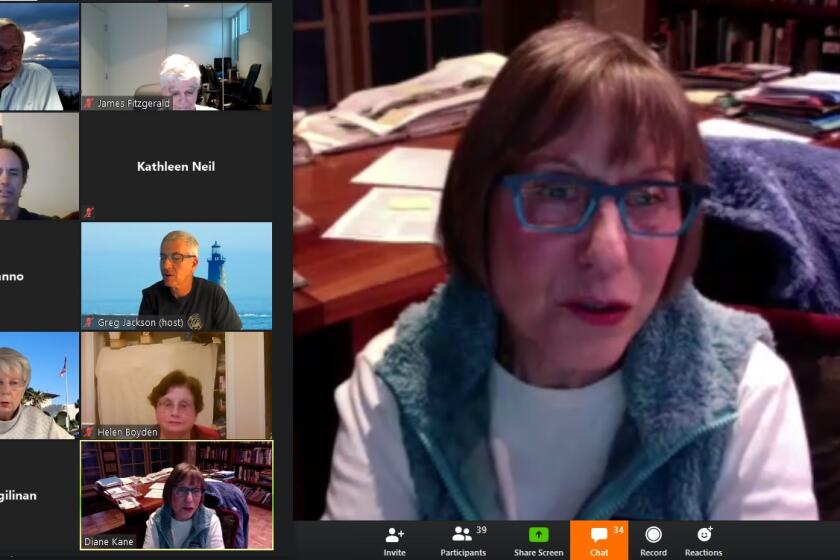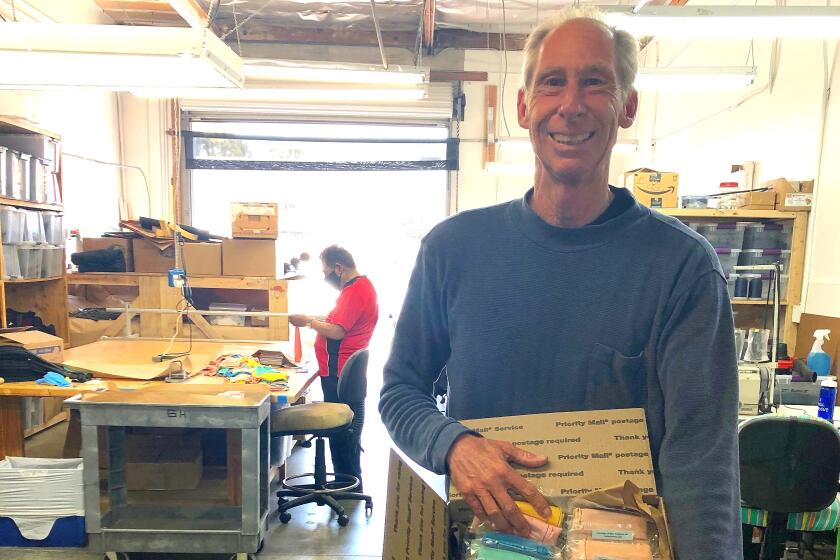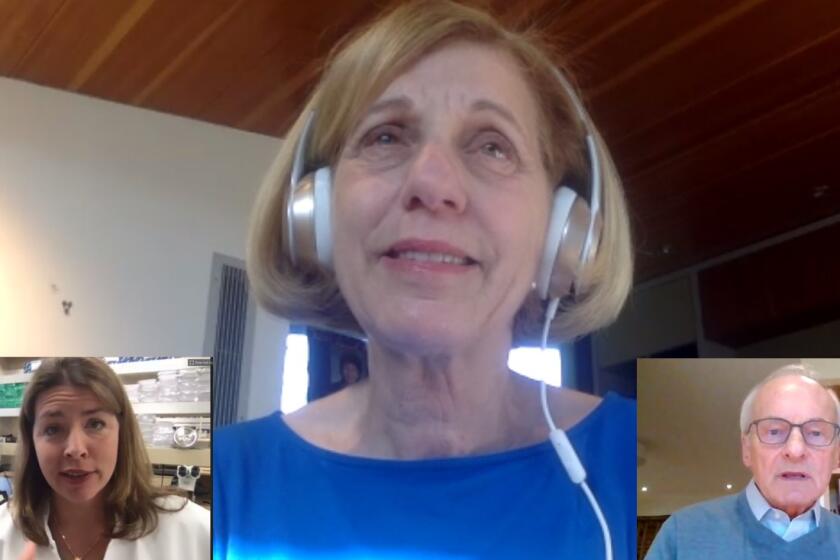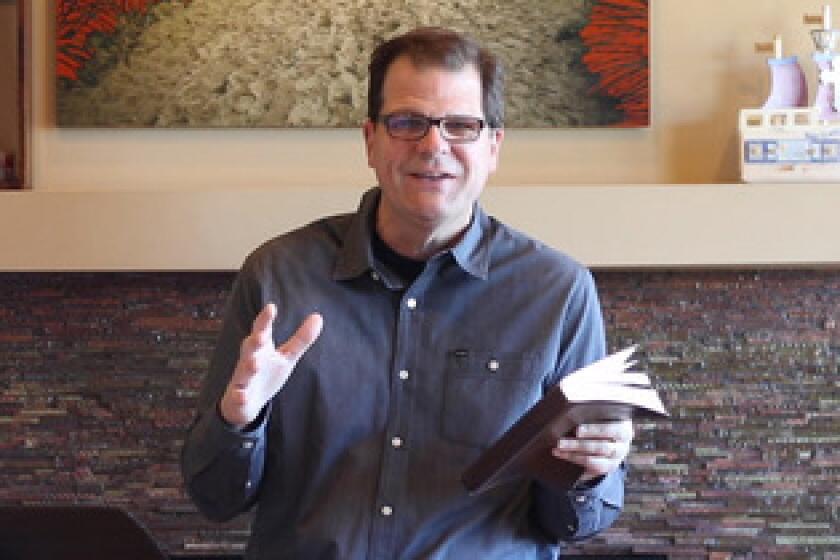All over La Jolla’s many pop-cultural references
La Jolla has been celebrated in pop culture since 1911. In fact, many La Jollans may be unaware how often their daily lives intersect with the landmarks that inspired popular books, songs, movies and TV shows.
Literary La Jolla
L. Frank Baum, author of “The Wonderful Wizard of Oz” and a frequent La Jolla vacationer in the early 1900s, made La Jolla the setting for 1911’s “The Sea Fairies” and its two sequel short stories. Baum never named his idyllic setting, concentrating most of the action underwater, but there were undeniable clues.
Trot, the heroine, lived in a small cottage on bluffs above seven caves resembling those at La Jolla’s Crocodile Point, in a town with a small bay and fishing fleet “nine miles from the railroad station” downtown.
Likewise, mystery author Raymond Chandler situated his final book, 1958’s “Playback” in La Jolla without mentioning it by name. Featuring his popular fictional detective, Philip Marlowe, the novel included many obvious La Jolla landmarks that still exist, including the Marine Room, opened in 1941 (which he renamed “The Glass Room”). But, for some reason known only to him, he called the town “Esmerelda.”
Chandler — who once referred to La Jolla as “a reluctant suburb of San Diego” — lived the last dozen years of his life in a house on Camino de la Costa and died at Scripps Memorial in 1959.
In 1965, Tom Wolfe spent somewhere between a few days and a month, depending on who you believe, supposedly observing a group of La Jolla teenagers who surfed and drank at WindanSea Beach and called themselves the Mac Meda Destruction Company because they earned money by tearing down unwanted barns for farmers. Wolfe had what he considered a better name for them, conferred because they hung out around La Jolla Water System Pump House 21 at the foot of Gravilla Street.
The results appeared in a 1966 magazine article and as a part of Wolfe’s 1968 book of collected stories called “The Pump House Gang,” foisting La Jolla onto the radar of the East Coast intelligentsia for the first time.
But Wolfe’s New Journalism style, shared by Hunter S. Thompson and Gay Talese, emphasized style over truth. Thus, the eccentric writer took liberties with many facts, beginning with combining two separate groups into one — the underage pump-house kids and the Mac Medas up the street.
“He was writing a story about Mac Meda by talking to the wrong guys,” said Doug Moranville, owner of the Branding Iron T-shirt printing shop and a Mac Meda member since the ’60s. “The people who were at the pump house at the time really had nothing to do with anything. He was interviewing the kids who were just getting their feet wet.”
La Jolla in music
La Jolla’s modern musical roots trace back to a Mel Torme rhyme in 1957. The Velvet Fog’s 30-minute “California Suite,” which name-checked his favorite cities, includes the lyrics: “La Mesa, what a place-a” and (get ready, it’s bad) “La Jolla won’t annoy ya.”
It wasn’t until The Beach Boys’ “Surfin’ U.S.A.” in 1963 that most of America would be taught how to pronounce (and spell) our town. The megahit placed The Jewel front and center when Mike Love sang of surfing, as if you didn’t know, “all over La Jolla/at Wa’imea Bay.” Last year, Love told the Light he used to visit La Jolla with his parents on their bi-weekly trailer cruises down to Ensenada. Love called it “one of our favorite places to have lunch.”
In 1986, a nasty diatribe against UC San Diego and two other University of California campuses (UCSB and UCLA) was released by the otherwise-cool alt-rock band Camper Van Beethoven. Called “(Don’t You Go To) Goleta,” it contained the lyrics: “Baby don’t ya go/don’t ya go to La Jolla./I’ve been there and I’ve seen their attitude./They don’t like folks who are not like them.”
Ouch.
The protagonist in Brad Paisley’s 1999 song, “I’ve Been Better,” got a promotion that included a transfer “to La Jolla right on the ocean.” And now, he sang, “I’m makin’ more money than I can stand.”
And there’s no deciphering whether the dense lyrics to British alt-rock band Jesus Jones’ 2001 song, “The Rocket Ships of La Jolla,” praise or haze us: “The rocket ships of La Jolla are waiting to blast away, blast away/Away for adventure, a trip of a lifetime of discovery/And you are the captain, going without me.”
Let’s go with praise.
Small screen presence
OK, so La Jolla isn’t exactly Hollywood South. In modern times, it hosted the 2011 season of MTV’s “The Real World: San Diego,” and residences here were used to film two 2000 movies: “Bring It On” and Steven Soderbergh’s “Traffic.” “Thor” (2011) did a pickup shot at Black’s Beach and the UC San Diego dorms were used in 2014’s “Veronica Mars.” But that’s pretty much it for major productions, which tend to favor downtown.
“San Diego looks like San Diego,” said UCSD communications manager Christine Clark, who handles filming for the campus, “but La Jolla, being La Jolla, looks like the beach, and there are beaches in L.A.”
Proving the point is Netflix’s “Grace and Frankie.” The popular comedy series is set in La Jolla and stars Jane Fonda and Lily Tomlin mention it often, something La Jollans can and should be proud of. But its beach house is located in Malibu.
— Did we miss anything major that you know about? Tell us in a Letter to the Editor for next week by e-mailing editor@lajollalight.com
Get the La Jolla Light weekly in your inbox
News, features and sports about La Jolla, every Thursday for free
You may occasionally receive promotional content from the La Jolla Light.




